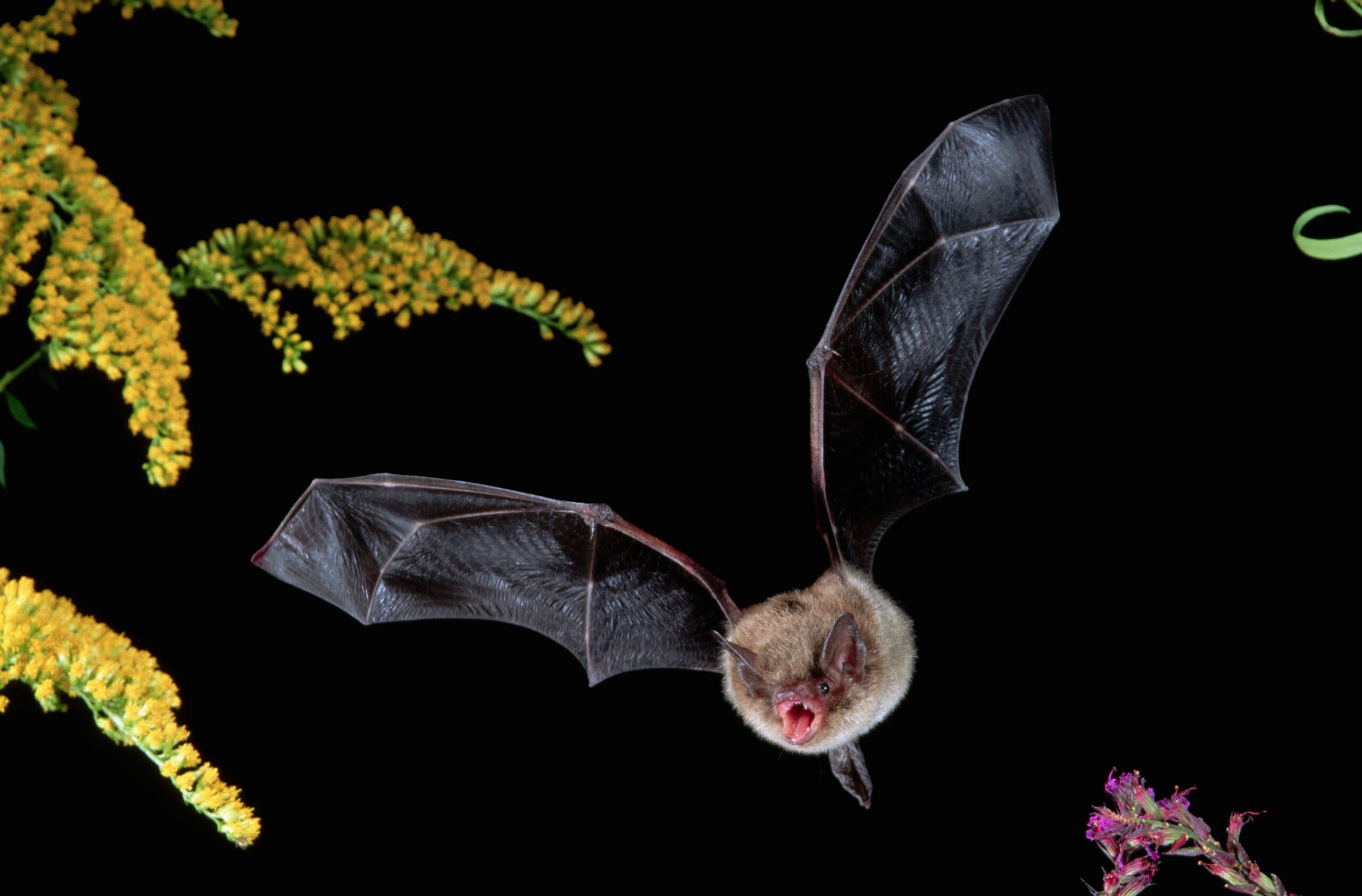Get to know bats, the misunderstood marvels that benefit your garden.

7 Fascinating Facts and Benefits of Bats

On This Page
Why You Want Bats in Your Backyard
With more than 40 species of bats found in North America, chances are good that these flying mammals are cruising through your neighborhood. Attract bats by protecting canopy trees, eliminating pesticides that kill their prey and installing a bat house.
But let’s face it, bats have a bad reputation. Many people are terrified of bats but really, there’s not much to be afraid of. In fact, there are some pretty amazing benefits of bats in your backyard that you might not be aware of! Plus, learn some amazing facts about bats.
Bats Eat Mosquitoes
If your outdoor gatherings are mosquito-free, give the credit to bats. Many eat more than 1,000 bugs in an hour, keeping yards and gardens safe from irksome pests. Bats also help keep populations of beetles and moths in check. Some bat species eat an incredible number of night-flying insects.
Types of Bats to Know

Almost 1,300 species of bats are found worldwide. The little brown bat is the most abundant in North America. They pick out different roosts for day, night and hibernation. The largest bat in the United States is the greater mastiff—its wings reach 2 feet across. The giant golden-crowned flying fox is the largest bat in the world. Found in the Philippines, its wingspan stretches 5 1/2 feet!
Bats Are Pollinators

Nine common creatures are considered pollinators—bats, birds, butterflies, moths, flies, beetles, wasps, small mammals and bees. More than 500 plant species count on bats for pollination.
Like bumblebees, bats benefit agriculture. They pollinate more than 300 varieties of fruit, including mangoes and bananas, as well as almond and cashew trees. And if you like tequila, thank bats. They help fertilize agave, tequila’s main ingredient.
Bats Spread Seeds to Grow More Plants
Fruit-eating bats are very important for the dispersal of seeds. This is especially important for cleared and damaged rain forests.
Bats Produce Valuable Fertilizer
Bat droppings (guano) are a very effective fertilizer and when collected responsibly bats can have a positive benefit on local economies.
Bats Boost Tourism

Believe it or not, bats can be a tourist attraction. An estimated 100,00 people visit a bridge in Austin, Texas to see the thousands of bats that live under the bridge come out to feed each night. By some estimates, this generates $10,000,000 in tourism revenue each year! That’s one of the biggest benefits of bats!
How Long Do Bats Live?
Bats live long lives for their tiny size, about 20 years. A few even live to 40! Using their fantastic senses of direction, they may return to the same backyards and nesting places every year.
Despite their long life, bats are at risk. Most female bats have just one pup a year. This small family size makes it hard to maintain population levels and leaves bats very susceptible to dangers like disease, pesticides, habitat loss and deforestation.
Additional reporting by Emily Hannemann
Sources
- CBS News – The largest animals of their kind on Earth
- Bat Conservation International
- Arizona-Sonora Desert Museum – Greater Mastiff Bat
- National Wildlife Federation – Little Brown Bat
- U.S. Department of the Interior – 13 Awesome Facts About Bats
- University of Missouri Extension – Bats of Missouri: Information for Homeowners
- Defenders of Wildlife – Bats
- U.S. Forest Service – Who Are the Pollinators?
- Bat Conservation International – Bats 101
- Bats Live – Calculate the Value of Bats
- Bats Without Borders – Threats to Bats






















